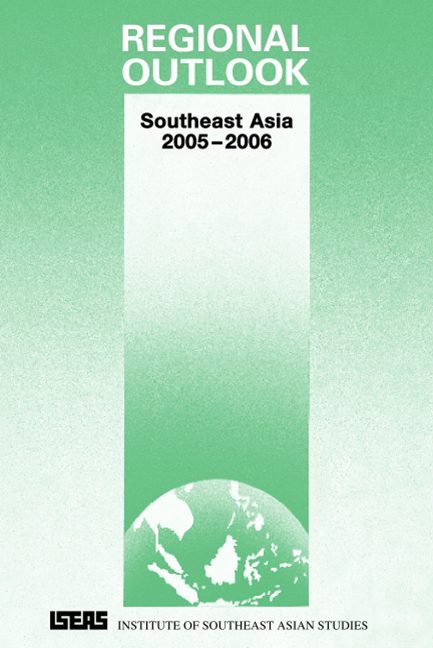Regional Economic Trends
from ECONOMIC OUTLOOK
Published online by Cambridge University Press: 21 October 2015
Summary
Economic recovery in the region is well under way, underpinned by robust growth in the global economy. In 2004, global output is projected to grow by 5 per cent while world trade volume (goods and services) will expand by 8.8 per cent (IMF 2004). Stronger global growth has been driven by economic rebounds in the United States, Japan, and the European Union as well as rapid economic expansion in China.
Southeast Asia is expected to register a strong GDP growth rate of 6.2 per cent in 2004 while the whole of East Asia is expected to grow by 7.3 per cent (ADB 2004). Robust growth in regional economies has been underpinned by increased industrial production in major economies (namely, the United States and Japan), sustained demand from China's booming economy, and an upturn in the information and communication technology (ICT) industry. Merchandise exports are expected to expand by 13.9 per cent in 2004 with many countries projecting double-digit growth rates (ADB 2004).
Singapore, Malaysia, and Vietnam are the region's star performers in terms of economic performance in 2004. Singapore's economy is expected to expand by 8.9 per cent while both Malaysia and Vietnam are projected to grow 7.5 per cent. Other Southeast Asian countries such as Thailand and Laos are also expected to register healthy GDP growth rates. (See country contributions for more detail on the economic projections.)
China continues to receive the lion's share of the world's foreign direct investments (FDI) — the country received US$53.5 billion worth of FDI in 2003 (UNCTAD 2004). In the same year, FDI flows to Southeast Asia increased by 27 per cent to US$19 billion. There continued to be disinvestments in Indonesia although the magnitude was significantly smaller compared with previous years.
Private investment has been picking up in Southeast Asia after several years of contraction or lackluster growth. Progress made in reducing non-performing loans, higher-capacity utilization, low interest rates, and improved business confidence have all contributed to the revival in private investment.
- Type
- Chapter
- Information
- Regional OutlookSoutheast Asia 2005-2006, pp. 65 - 86Publisher: ISEAS–Yusof Ishak InstitutePrint publication year: 2004



